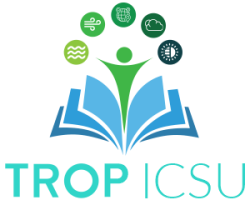Infrared Spectra of Greenhouse Gases

Infrared Spectra of Greenhouse Gases Visualisation A visualisation to learn about the infrared (IR) spectra of different greenhouse gases and the effect of greenhouse gases on the Earth’s climate. Students will use the visualisation to view the IR spectra of different greenhouse gases, observe the amount of IR radiation absorbed for the current concentration of […]
Water Vapour Feedback and Earth’s Climate

Water Vapour Feedback and Earth’s Climate Reading A reading that explains the phase diagrams of water on Earth, Mars, and Venus and discusses the water vapor feedback mechanism in the atmospheres of these planets that influences the greenhouse effect. Students will be able to explain the concept of water vapor feedback on Earth’s atmosphere by […]
Radiation Laws

Radiation Laws Video A video lecture titled, ‘Atmospheric radiation – Radiation laws’ from the e-learning course, ‘Introduction to Atmospheric Science’ developed by C Balaji, IIT Madras, for National Programme on Technology Enhanced Learning (NPTEL), India. This video lecture includes discussions on various aspects of radiation, atmospheric radiation and the radiation laws. Students will be introduced […]
The Greenhouse Effect of the Atmosphere

The Greenhouse Effect of the Atmosphere Video A video micro-lecture that discusses Earth’s energy balance and the greenhouse effect of the atmosphere. Students will learn how to determine the surface temperature of planet Earth with no atmosphere and with 1- and 2-layer atmosphere. They will also understand the greenhouse effect of the Earth’s atmosphere. Use […]
Upwelling

Upwelling Video A microlecture (video) that introduces the topic of upwelling in oceans and how the direction of motion of water in the oceans is influenced by the Coriolis Effect. Students will learn how the Coriolis Effect on the Trade Winds at the equator influences the movement of surface water in the oceans causing an […]
Phase Diagrams and Earth’s Climate

Phase Diagrams and Earth’s Climate Video A video micro-lecture that describes the phase diagrams of water on Earth, Mars, and Venus. It also describes the water vapor feedback mechanism in the atmospheres of these planets that influences the greenhouse effect. Students will understand the stable phases of water at various temperatures on Earth. They will […]
Climate Change in the Geography Classroom

Climate Change in the Geography Classroom Video A video lecture by Rahul Chopra, TROP ICSU and IISER Pune on climate change educational resources that Geography teachers can use in their classrooms. These educational resources integrate climate change understanding with the core curriculum in Geography. This video lecture is part of an online e-learning course (MOOC) […]
Hadley Circulation

Hadley Circulation Reading A reading to learn about the Hadley Cell and a simple model for the Hadley Circulation, using the law of conservation of angular momentum. In this reading, students will discuss and explore the effects of changes in atmospheric dynamics on Hadley circulation and will analyze the potential impacts on climate. Use this […]
Rising Sea Surface Temperature and Hurricane Intensity

Rising Sea Surface Temperature and Hurricane Intensity Video A video to learn about hurricanes as heat engines, and the possible effects of increasing sea surface temperature on the intensity and frequency of hurricanes. Students will understand the process of hurricane formation, and the factors that influence the number and strength of hurricanes. They will discuss […]
Hadley Circulation-Heat Transport in the Atmosphere

Hadley Circulation-Heat Transport in the Atmosphere Classroom/Laboratory Activity A classroom/laboratory activity to learn about radiation, heat transport, convection, and energy/mass conservation by interpreting and mapping the Hadley Circulation. Students will analyse and map real data through the NASA MERRA reanalysis model to understand the actual impact of the Hadley Cell on the Earth’s climate system […]


